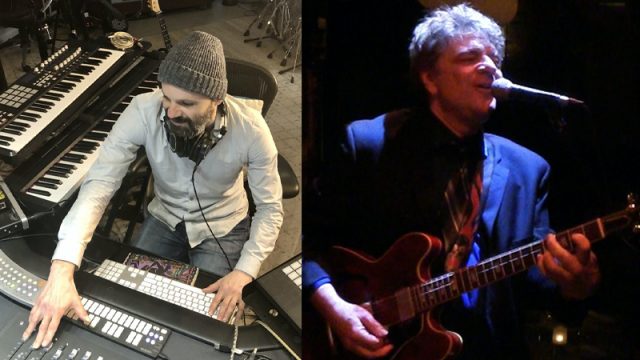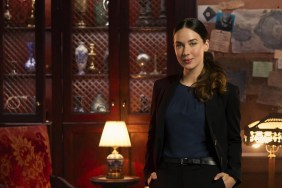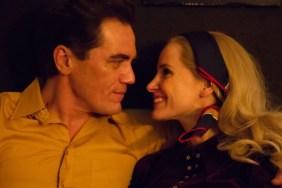Turning the Tables with Robin Roberts is currently streaming on Disney+. The series sees Robin Roberts converse with some of Hollywood’s groundbreaking women as they bear witness to their incredible journeys on their path to purpose. The series features music by Flavorlab, an award-winning audio production company that composes, records, mixes, and masters music and sound for the biggest brands in the world.
ComingSoon’s Jeff Ames spoke with Flavorlab’s Erik Blicker and Glenn Schloss about their approach to the series. Check out the interview below!
RELATED: The Game Reboot Set for Paramount+ Starring Tim Daly & Toby Sandeman
Jeff Ames: Talk about Turning the Tables with Robin Roberts — what drew you to this project?
Erik Blicker: Kadine Anckle, the showrunner, approached Glenn about creating an iconic theme for the show. Kadine’s creative direction was incredibly inspirational – love, spirituality, connectedness, sensitivity, and strength – which made it a perfect project for us to take on.
How did your team approach the series?
The EP and production team requested a theme, show package, and audio mix delivered to Disney’s specs. Kadine wanted each episode to have its own unique variation on that theme, while still feeling familiar to the listener. She’d envisioned an aria: a soloist singing a beautiful melody. The music had to go on a journey, like these iconic women had, from sensitivity to power and highlight how interconnected we all are. When I [Erik] was writing the melodies, I was thinking of all the strong women in my life, like my wife, my mother, and my daughter.
That inspired several uplifting, spiritual melodies. We auditioned four female singers and as it’s a show about empowerment and vulnerability, the singer needed to reflect those feelings. A big part of creating the final product was working through the melodies with the singers. Disney ultimately chose Mai-Elka Prado, who happened to be the voice Kadine was thinking of from the beginning. As we developed this, it was important to create a warm, introspective music track to accompany Mai-Elka. The nylon guitars and hand percussion gave it a very universal, human sound and provided a lot of that warmth.
What were some of the challenges the series presented in terms of scoring and sound mixing?
First, we were auditioning and recording singers during a pandemic. We’d never worked with Mai-Elka before so while we have had the good fortune to keep scoring and remote recording during the pandemic, and weren’t terribly concerned about the logistics of it, there’s still that fear of the unknown. Normally, we’d have the benefit of being in the same studio, building that chemistry, trying ideas, and listening to things together. The upside to that is, we’ve found sometimes it’s even more efficient and constructive to not be together. We can have the initial creative conversation and then each person can take the ball and run with it. Everyone has an opportunity to breathe and work on some passes without any interference.
With the score featuring vocals so prominently, it was also really important we make the vocalists in the demo phase sound their best. A lot of that took place over the phone or video chat. We worked through melodies and syllables on calls. Erik called up the finalists to determine their optimal key, phone in one hand, the other on the piano, then transposed the theme for each person demoing with us. Each of them were recording from home setups. Mai-Elka sent her finals to us recorded in her kitchen under a blanket. She really nailed the warm, resonant tone, with the addition of a little radiator hum in the background. We used the Izotope Spectral Denoise to clean up her vocal tracks.
Another score challenge came before we played the contemplative, lifting melodies to the team: the creative direction changed. The show wanted to try a more modern pop sound, like a typical talk show. We’ve dealt with shifts like this before, but in this case, we were continuously working with the singers demoing for us throughout this transition.
Ultimately, they decided the pop direction wasn’t working and quickly we had to turn another idea around. We had those spiritual, acoustic melodies without vocalists on them yet so I [Erik] sent them to Kadine with my voice in falsetto. I was nervous! I kept thinking, “Just listen to the melody, don’t listen to my voice.” She totally got it and could hear Mai-Elka’s there and trusted that direction would come together. Her strong creative vision allowed her the ability to let that process play out and made moving back and forth on our side a lot easier.
On the sound side, the focus was clarity. The benefit of the natural environment was that our sound team didn’t have to fill in dead air, but did have to pull out planes overhead or birds in the trees without taking away from whoever was speaking. With multiple guests, they also had to be sure to focus on one person if two people were speaking at once. Most of the challenge was removing distraction while keeping the sound authentic and not taking anything away from the environment.
Was there a specific moment or episode that helped inform the rest of the score, or was it mostly an episode-by-episode project?
The way the show is shot gave us a good guideline for the mood we had to match. The set alone was very intimate – either out on a patio in a garden or in a living room. They had a lot of wide shots to make the viewer feel like they were sitting with the other guests.
The topics of each episode – intuition, authenticity, vulnerability, and groundbreakers – made for some very open and honest discussion so that lent itself to the score being incredibly minimalistic. We were asked to create an overarching, iconic theme with variations so we created over twenty versions with alt mixes and splits for the editing team. Once that main theme was approved, their team was able to work it in and highlight certain moments throughout the conversation with our show package.
Was there an opportunity to step outside your comfort zone and try something you had never tried before?
We were pretty steadfast in not using pre-recorded samples on this project. Often, we’ll embellish certain moments in a score with samples, but this project was strictly organic. The show’s themes and the acoustic nature of the score really required human sensitivity in terms of feel and vibe.
RELATED: Five Things We Want to See in Disney’s Rocketeer Sequel
What episode are you most proud of in terms of your work?
Tough pick! Each episode covers a different broad topic and each features a new round of guests. The music had to be a throughline and translate that unifying honesty across the whole series. We will say, it’s a thrill to see some musical icons on the show, such as Melissa Etheridge, so if we had to pick, episode 3 “Vulnerability” would be it. On the sound side, that episode is also shot outside and our mix team did a wonderful job of pulling out distracting noise while keeping the natural environment intact and giving each guest’s voice warmth and clarity.
What does your team look for when seeking out a project?
Whatever the project is, we always want to work with great, creative collaborators.
Do you have any additional projects coming up that you can talk to us about?
We have several things in the cooker right now including tracks for CBS NFL broadcasts. But are really proud of last year’s movie soundtrack we scored for HBO Wildcard: The Downfall of A Radio Loudmouth.










